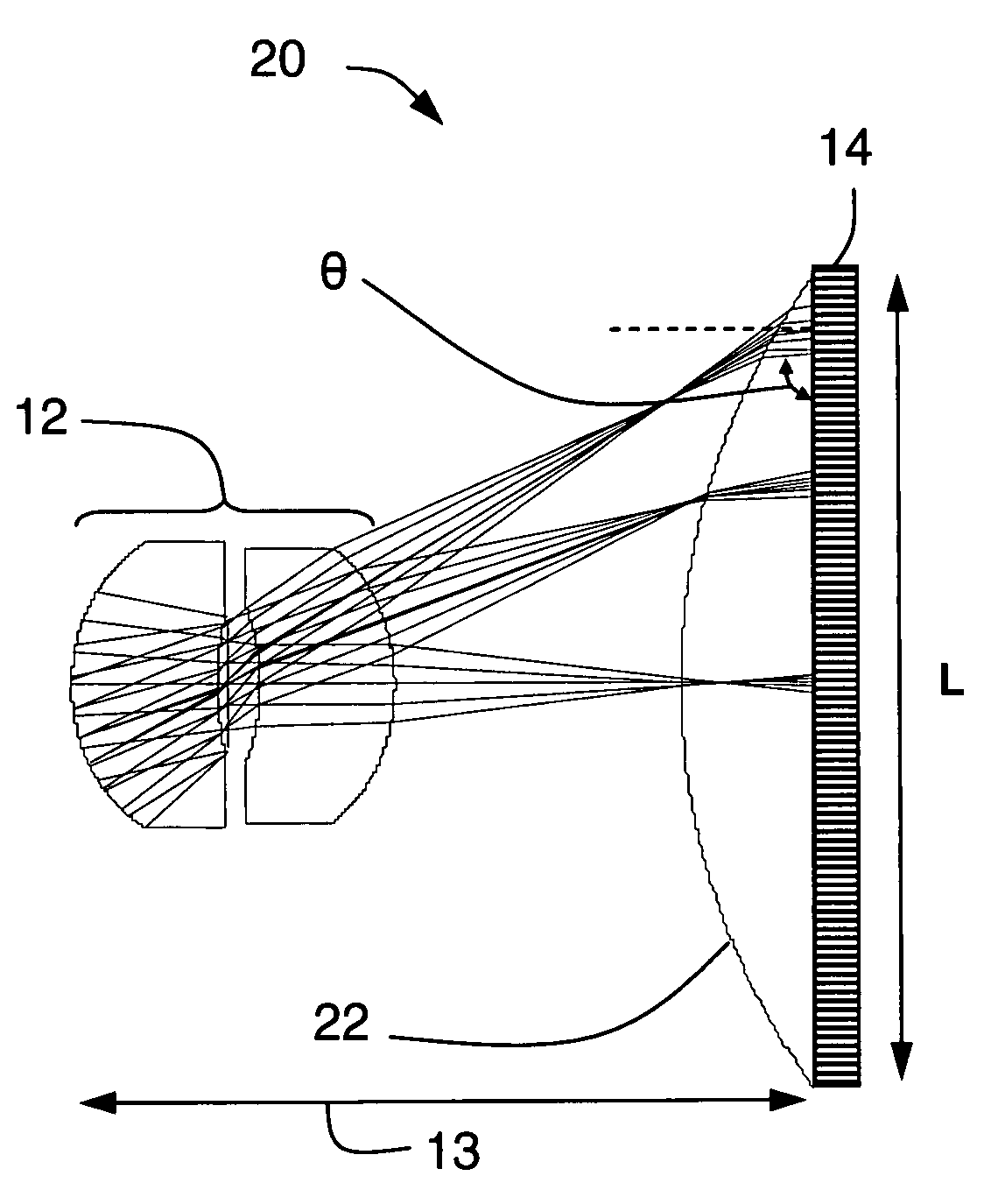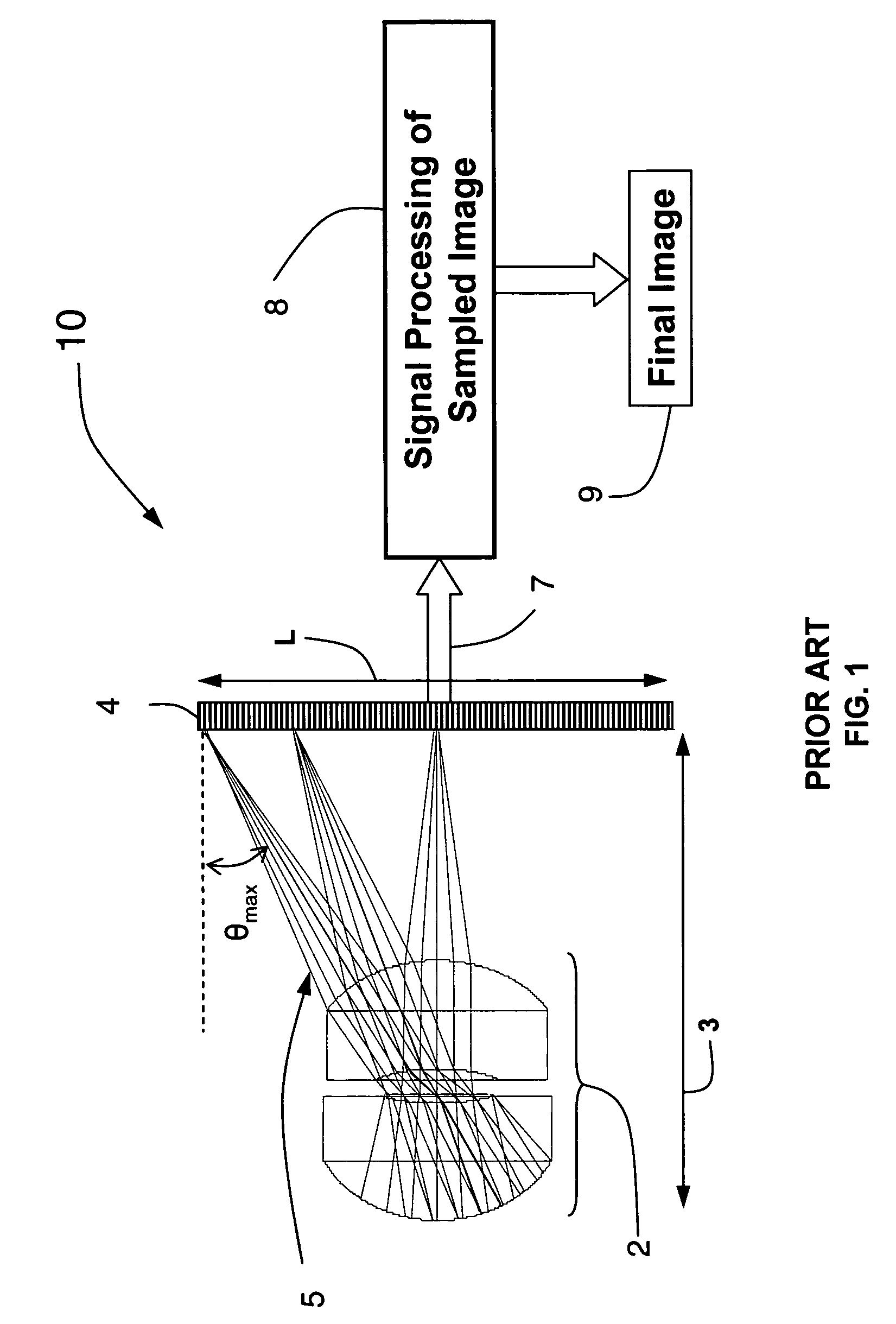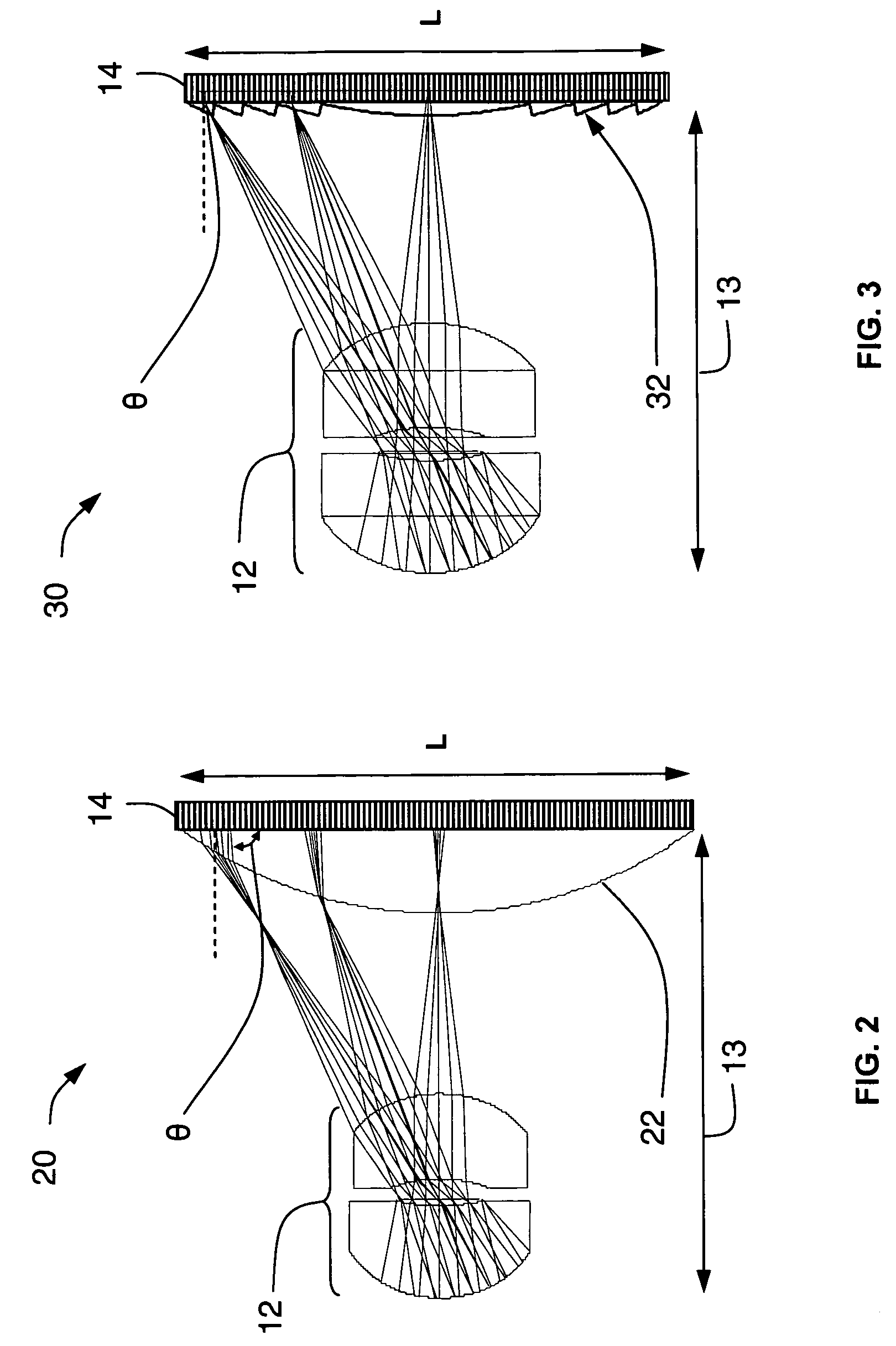Low height imaging system and associated methods
a technology of low height and imaging system, which is applied in the field of low height imaging system and associated methods, can solve the problems of insufficient freedom to control the variety of optical and mechanical aberrations, and affecting the quality of low-level imaging, etc., and achieves the ideal design or alignment of the different components. , it is difficult to adjust any of the components once assembled, and the difficulty of achieving
- Summary
- Abstract
- Description
- Claims
- Application Information
AI Technical Summary
Problems solved by technology
Method used
Image
Examples
Embodiment Construction
[0063]Optical systems and devices are now described which increase image quality even though they have a short z-length, or equivalently low height, with respect to the size of the detector. “Short” or “low height” is generally defined as a Z-length (from the first surface of the optics to the front of the detector) that is less than twice the effective focal length of the optical system.
[0064]These systems and devices may provide other advantages, for example they may provide: relaxed tolerances (to reduce costs) of the optics, mechanics, and digital detector while still achieving high image quality; for use of modified off-the-shelf short volume optics for high quality imaging; for use of customized short volume optics for high quality imaging; for use of customized short volume optics with reflections for high quality imaging; for use of groups of short volume optics to form high quality images; for use design of specialized exit pupils for specialized imaging systems such that d...
PUM
 Login to View More
Login to View More Abstract
Description
Claims
Application Information
 Login to View More
Login to View More - R&D
- Intellectual Property
- Life Sciences
- Materials
- Tech Scout
- Unparalleled Data Quality
- Higher Quality Content
- 60% Fewer Hallucinations
Browse by: Latest US Patents, China's latest patents, Technical Efficacy Thesaurus, Application Domain, Technology Topic, Popular Technical Reports.
© 2025 PatSnap. All rights reserved.Legal|Privacy policy|Modern Slavery Act Transparency Statement|Sitemap|About US| Contact US: help@patsnap.com



